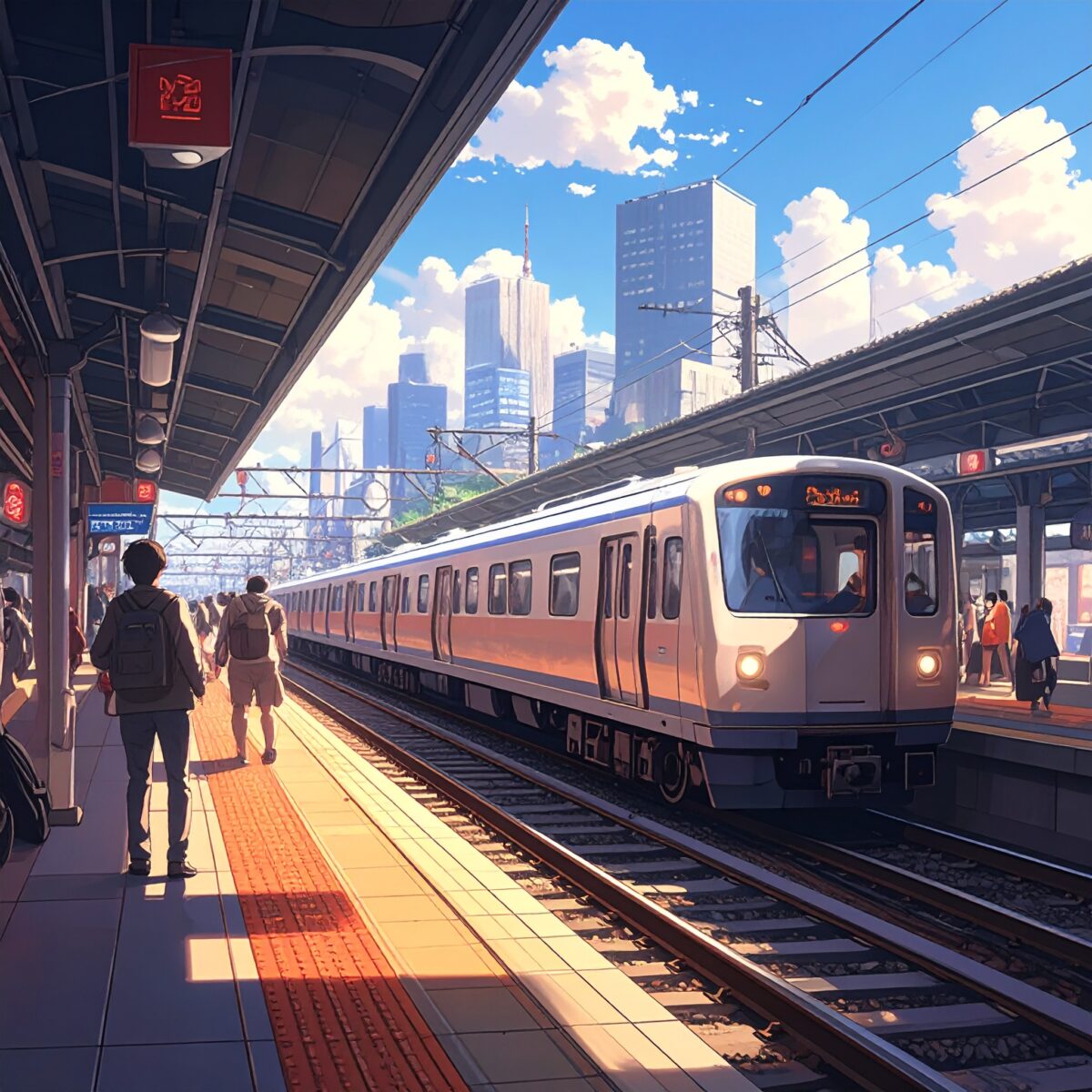The first thing I noticed when riding a train in Japan was the silence. Aside from the soft hum of the train in motion, the cars were remarkably quiet—no loud conversations, no phone calls, no background music. Even in crowded compartments, there was an absence of noise that made me wonder, “Is this really public transportation?”
I took the Tokyo subway during the morning rush hour. Despite the train being packed, passengers quietly tapped on their phones, read books, or simply closed their eyes. No one was talking. There were no bursts of laughter. Some people weren’t even wearing headphones—they just gazed out the window in calm stillness. Only the announcements and the sound of the doors marked the passing of time. It felt more like a library than a commuter train.
This quietness isn’t just a matter of etiquette—it’s a reflection of Japanese social awareness. People value their own time while consciously avoiding interference with others’. In public spaces, harmony with the surrounding environment is a deeply held principle. This means it’s natural to mute your phone, speak softly, and be mindful of sound leakage.
At first, I felt overly conscious—worried that even a sneeze might disrupt the peace. But after a few days, I began to truly appreciate this environment. Travel time became thinking time, resting time. I could reflect without interruption and simply observe the world passing by. That silence became a welcome pause in my journey—an unexpected but cherished space for stillness.

What also amazed me was how clean the trains were. Not just free of litter—every surface, from the seats and floors to the handrails, looked carefully maintained. Riders respected this without question. No one had their feet on the seats. Rarely did I see anyone eating or drinking. The combination of quiet and cleanliness made the train feel less like public transportation and more like a moving lounge.
Even on rural local lines, the same atmosphere prevailed. Passengers nodded to each other quietly, and when people spoke, their voices were soft and respectful. Occasionally, someone would point out a scenic view outside the window—but even that felt gentle, never intrusive. Watching the landscape roll by in near silence became one of the most meaningful parts of my journey through Japan.
Of course, not every train is completely silent. On scenic or tourist lines, there are announcements and excitement. On weekend nights, you might find lively groups. But even then, there’s a sense of restraint. The foundational manners remain intact. You can feel the collective understanding—an unspoken agreement of “this is how we do things here.”
By the time I had adjusted to this quiet, I came to a realization: Japanese trains are not just a way to get from point A to point B—they are a mirror of society. While the carriages may look similar to those in other countries, the atmosphere inside—the flow of time, the shared awareness—is entirely different.
When I return to Japan, I know I’ll seek out that stillness again. I’ll take off my headphones and watch the world pass by through the train window. In that quiet, I find a conversation not with others, but with myself. Japan’s trains may lack noise, but in that silence, they let the sounds of your journey echo even more clearly.




